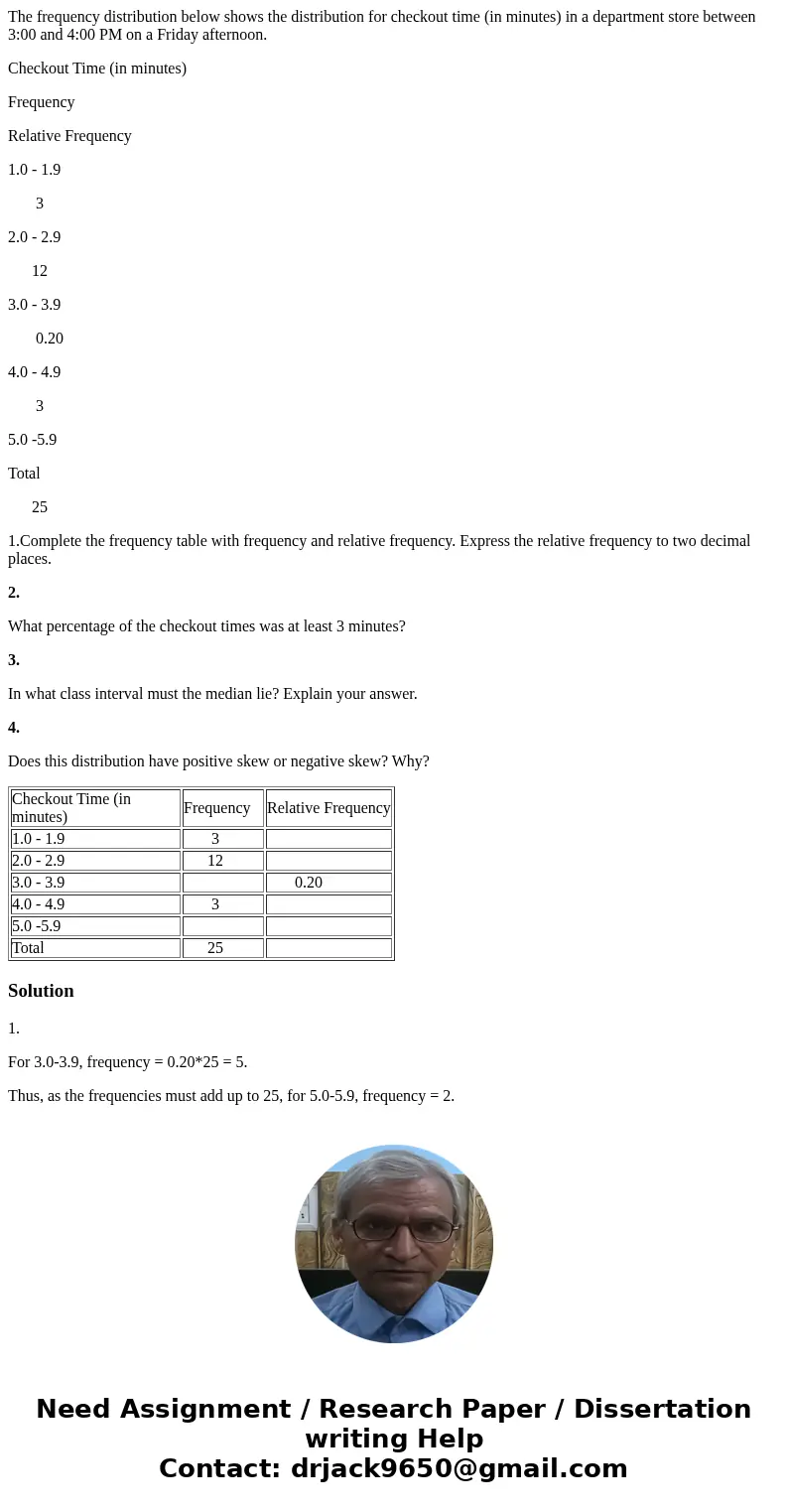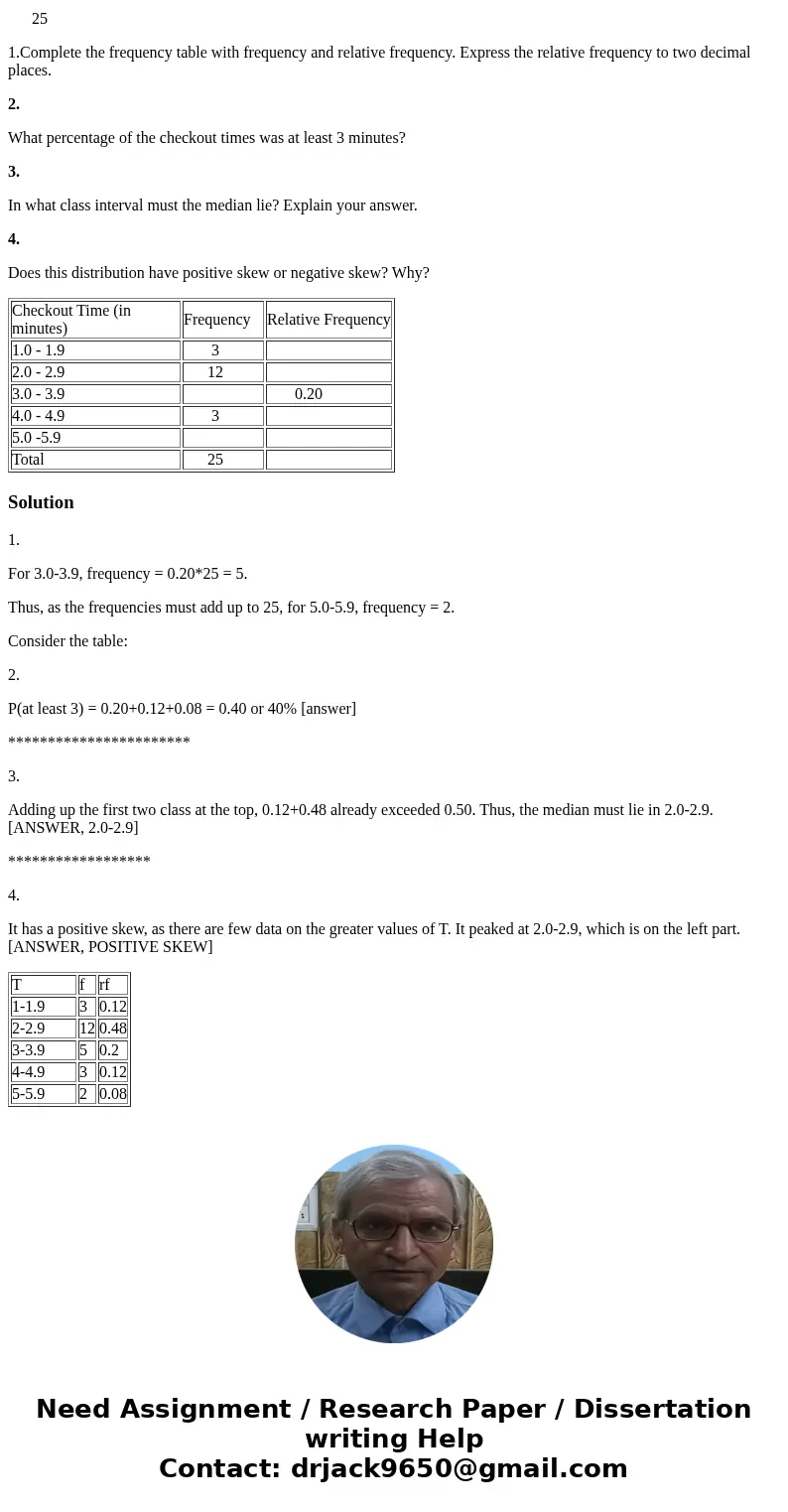The frequency distribution below shows the distribution for
The frequency distribution below shows the distribution for checkout time (in minutes) in a department store between 3:00 and 4:00 PM on a Friday afternoon.
Checkout Time (in minutes)
Frequency
Relative Frequency
1.0 - 1.9
3
2.0 - 2.9
12
3.0 - 3.9
0.20
4.0 - 4.9
3
5.0 -5.9
Total
25
1.Complete the frequency table with frequency and relative frequency. Express the relative frequency to two decimal places.
2.
What percentage of the checkout times was at least 3 minutes?
3.
In what class interval must the median lie? Explain your answer.
4.
Does this distribution have positive skew or negative skew? Why?
| Checkout Time (in minutes) | Frequency | Relative Frequency |
| 1.0 - 1.9 | 3 | |
| 2.0 - 2.9 | 12 | |
| 3.0 - 3.9 | 0.20 | |
| 4.0 - 4.9 | 3 | |
| 5.0 -5.9 | ||
| Total | 25 |
Solution
1.
For 3.0-3.9, frequency = 0.20*25 = 5.
Thus, as the frequencies must add up to 25, for 5.0-5.9, frequency = 2.
Consider the table:
2.
P(at least 3) = 0.20+0.12+0.08 = 0.40 or 40% [answer]
***********************
3.
Adding up the first two class at the top, 0.12+0.48 already exceeded 0.50. Thus, the median must lie in 2.0-2.9. [ANSWER, 2.0-2.9]
******************
4.
It has a positive skew, as there are few data on the greater values of T. It peaked at 2.0-2.9, which is on the left part. [ANSWER, POSITIVE SKEW]
| T | f | rf |
| 1-1.9 | 3 | 0.12 |
| 2-2.9 | 12 | 0.48 |
| 3-3.9 | 5 | 0.2 |
| 4-4.9 | 3 | 0.12 |
| 5-5.9 | 2 | 0.08 |


 Homework Sourse
Homework Sourse